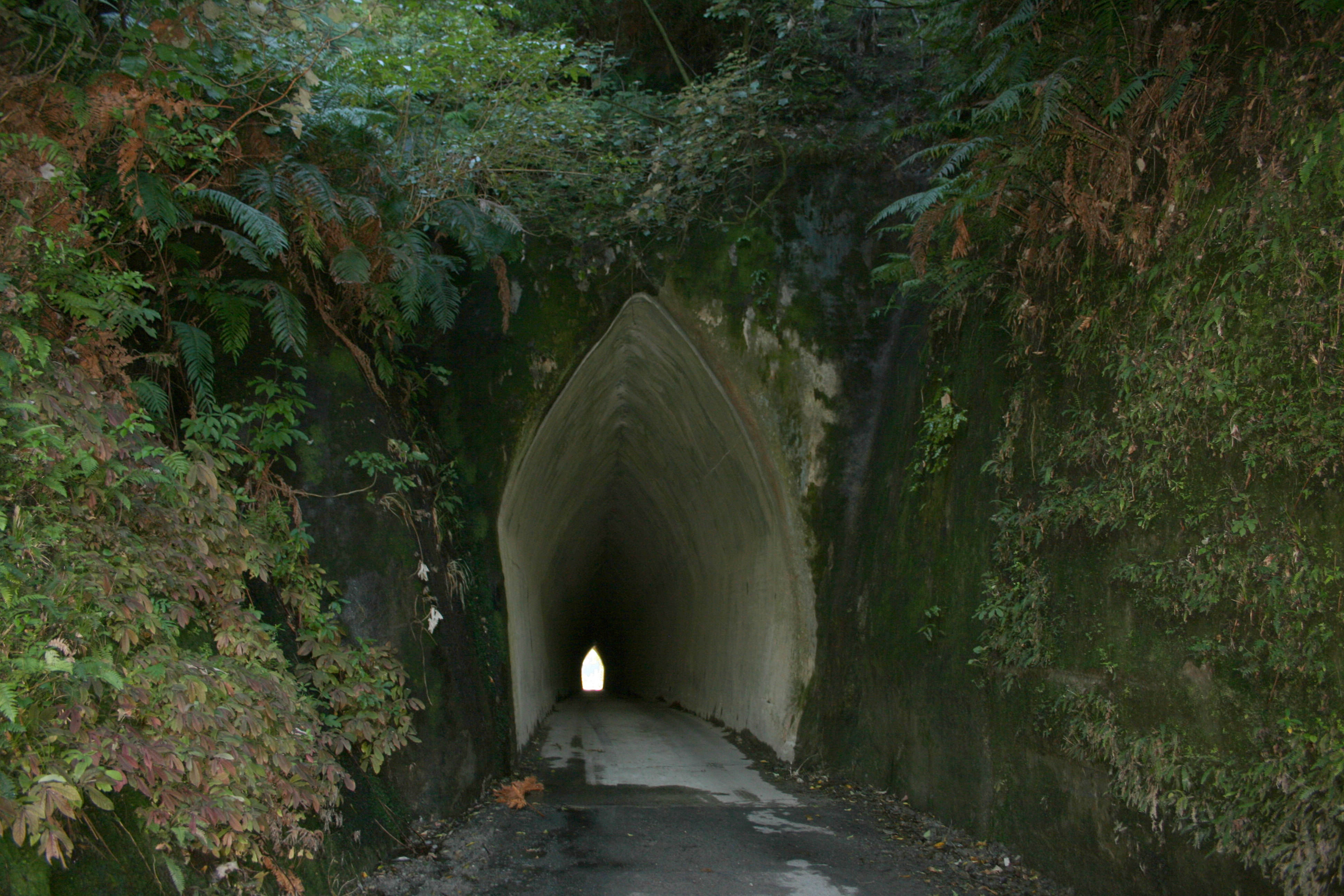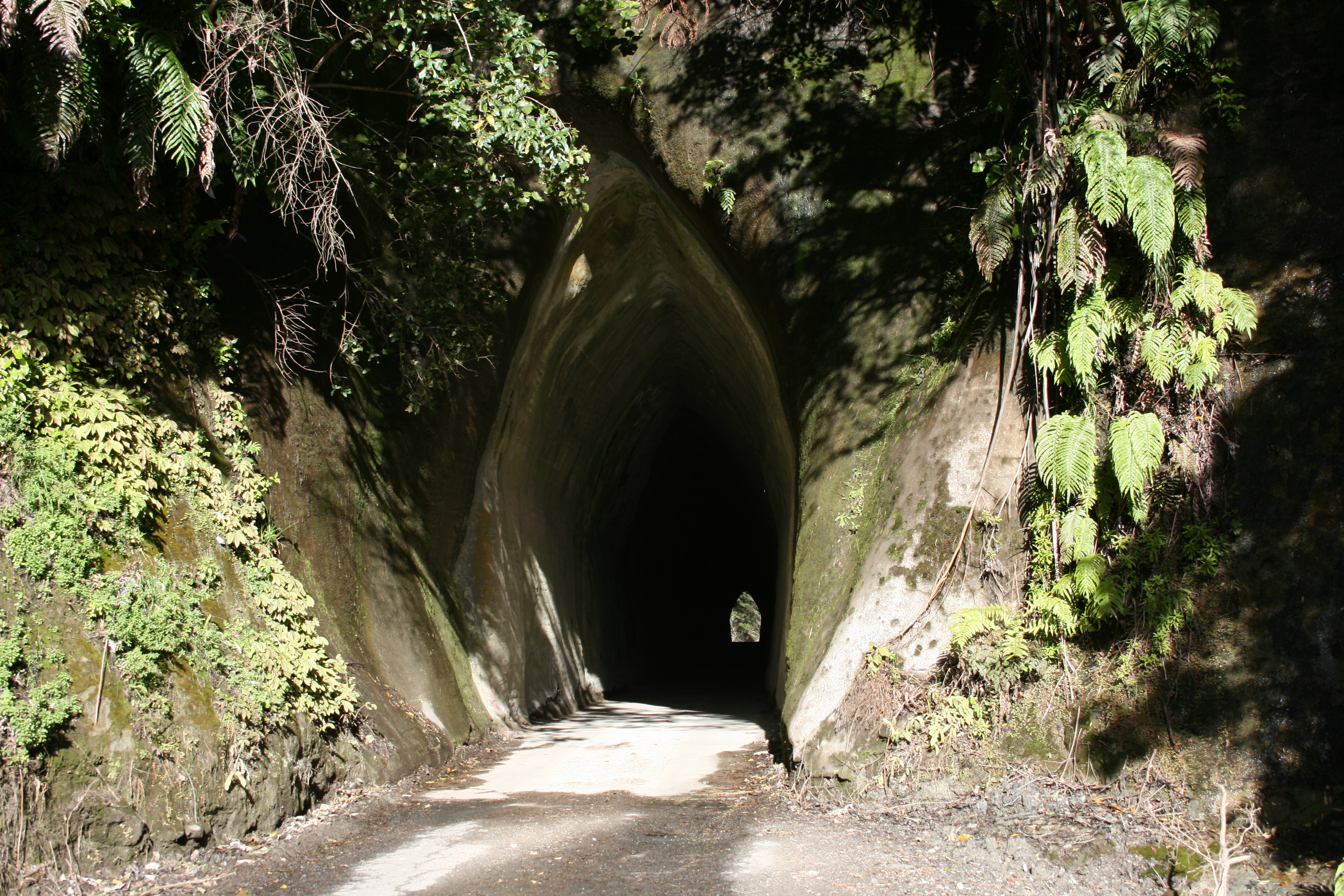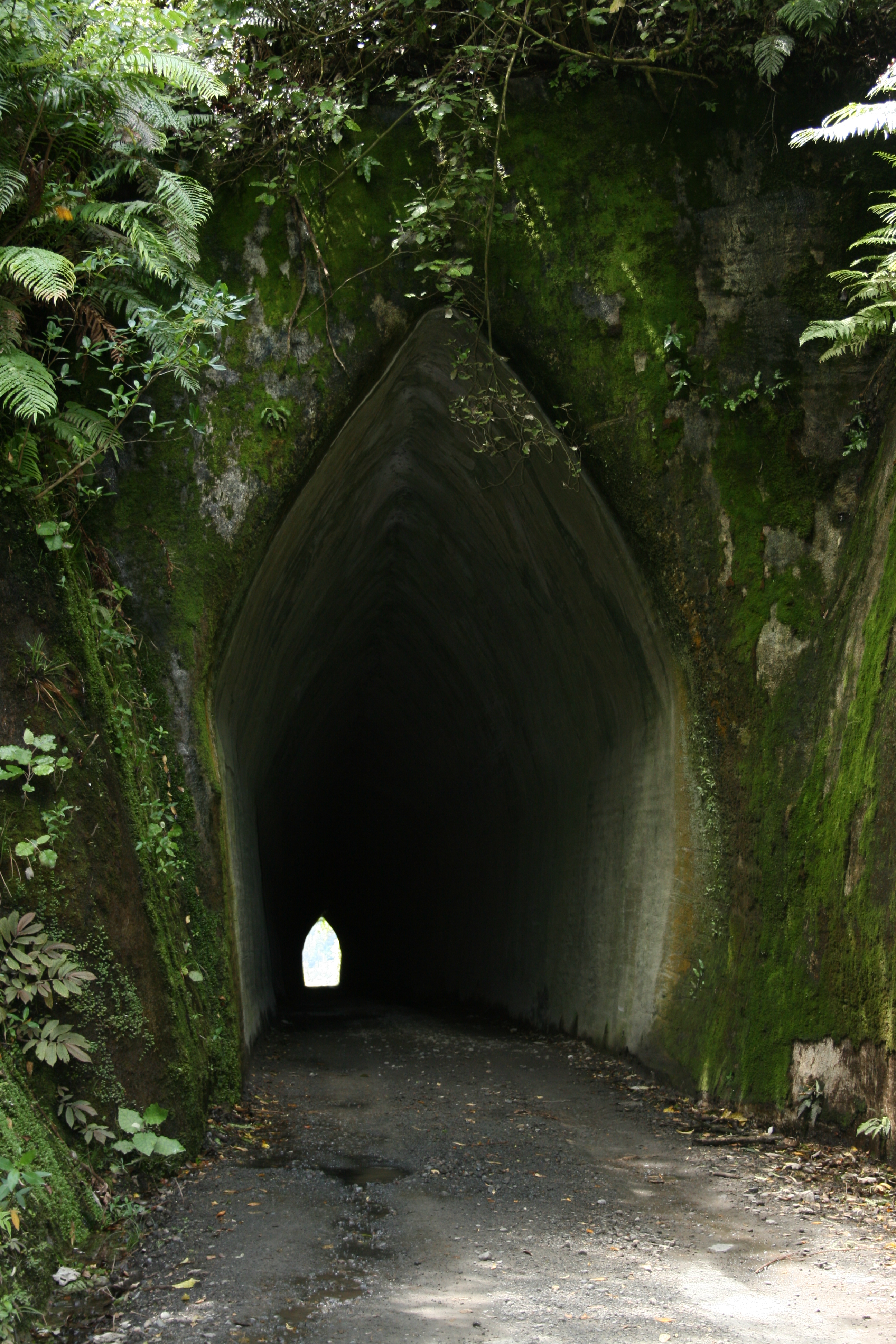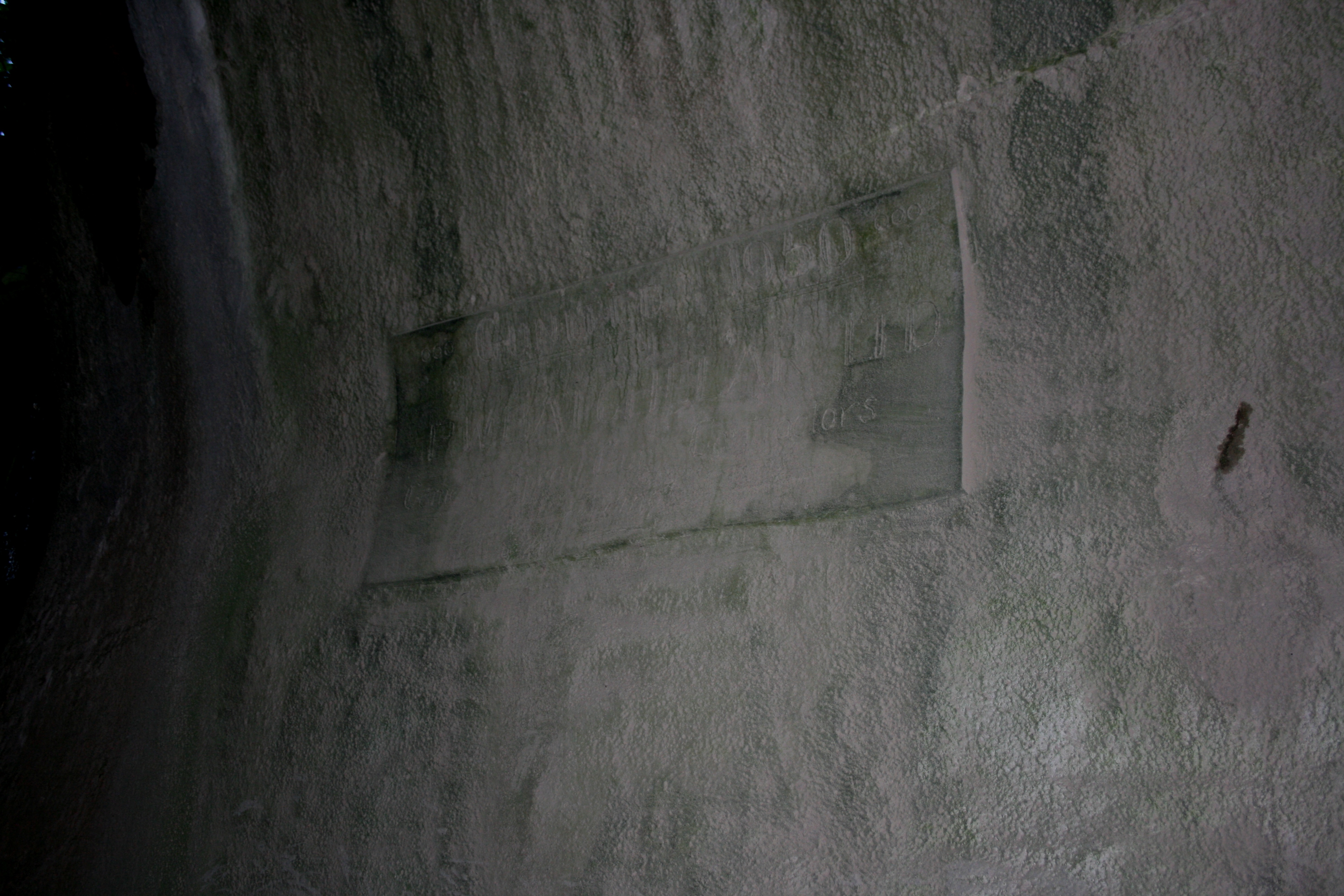







Excavated in 1909 and known variously as the Matau Tunnel, the Matau Valley Tunnel and the Mangaoapa Road Tunnel, this tunnel provided access to the Stratford area for Matau residents - their previous route went to Inglewood via Purangi.
From the Stratford District Council's Heritage Inventory:
The Matau, Junction, Mangaoapa and Mangamaire Roads were originally located in the Clifton County, with the surveying being finished in 1893. The land was steep, and progress was held back by limited funds and difficult communication. Some settlers battled on, and Matau became one of two villages which met these settlers' basic needs. A school was opened in 1896 with a roll of 10 pupils; a post office and a small store were added, and farmers made butter in their own dairies as the road was too poor to be able to establish a dairy factory. Before the early 1900s, the main route to this village was via Purangi and Tarata. However, inland railway advanced and a railway line from Stratford to Ongarue was started in 1905. The settlers of Matau decided that because of this, the road over the saddle to Kiore needed to be completed. Slow progress meant that by 1908 the railway had gone as far as Huiroa, but the road was still not complete. In fact, by this stage the Kiore tunnel had only just begun to be dug out.
In 1910 [sic] the completion of the tunnel marked the completion of the road to Kiore. This road became the main access to the village and surrounding farms. The ease of it compared to earlier access routes gave a new life to the area and greater value to the land. Settlers could now sell their land for profit if they wanted to move away, instead of having to just leave it.
By 1950, the tunnel started to show signs of decay, with the timber lining beginning to rot through and collapse. A Feilding firm was employed to take the old timber out, and replace it with reinforced concrete. This was done to about three quarters of the tunnel, with the original timber remaining to line the rest, and the total cost was ₤3,820. No further work was carried out on the tunnel until 1994, when a major upgrade saw the lining replaced with rock bolts, reinforcing mesh and concrete... It is perhaps one of the most treasured tunnels in Taranaki, as it is one of the few that still retains its original cross section, and has had no widening or lowering take place.
Gunite plaque
A plaque inside the southern portal of the tunnel added in 1950 reads:
GUNITED IN 1950 / by / P. W. BATCHELAR LTD / CEMENT SPRAY GUN CONTRACTORS / Feilding
Gunite or shotcrete is concrete sprayed under pressure to consolidate walls.
Tremendous slip at Kiore Tunnel (Taranaki Daily News 27 April 1909)
LinkKiore Tunnel now finished (Taranaki Daily News 8 October 1909)
LinkKiore Tunnel traversed for the first time (Taranaki Daily News 25 October 1909)
LinkTaranaki (New Zealand), view through highway tunnel near Kiore (1925). Frederick Gardner Clapp. University of Milwaukee Libraries (7343).
LinkRoad Tunnels of Taranaki
LinkPlease do not reproduce these images without permission from Puke Ariki.
Contact us for more information or you can order images online here.